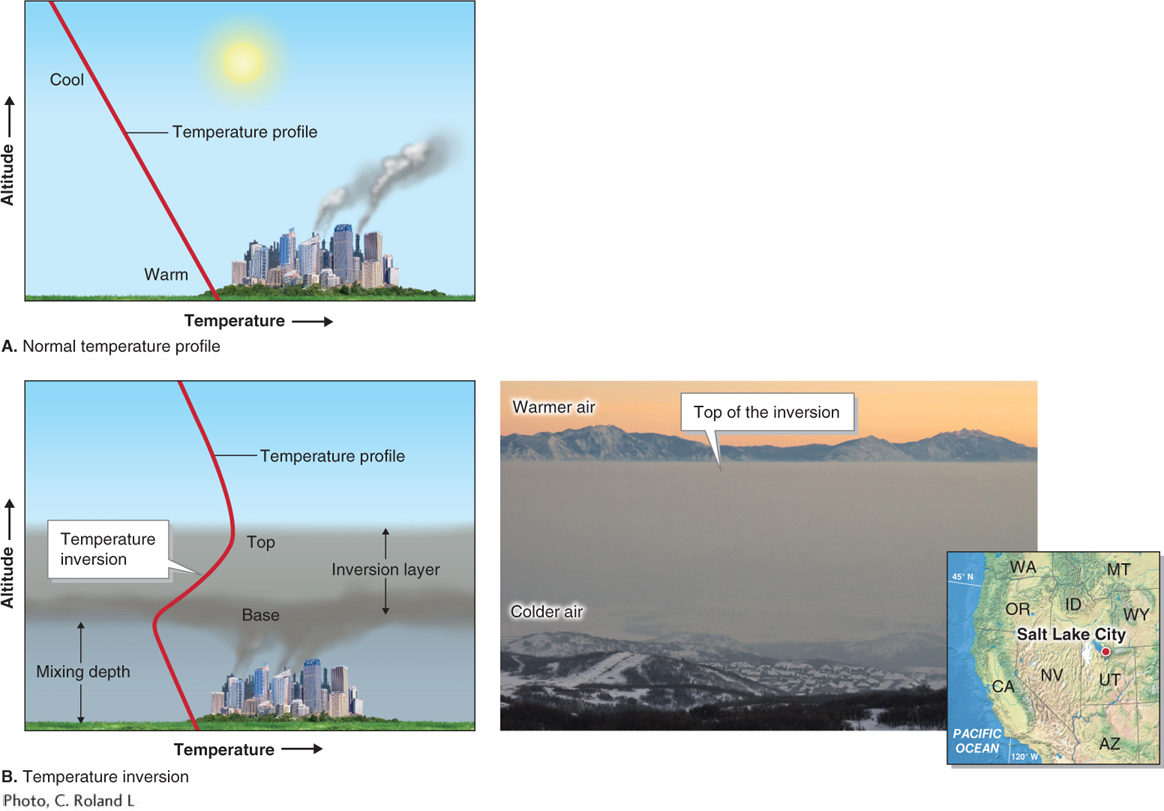
Figure 1.13
Temperature inversion and smog. (A) This normal temperature profile of the atmosphere shows decreasing temperature with altitude. This profile allows pollutants to rise and be dispersed by winds. (B) In a temperature inversion, a layer of air warms as altitude increases. This profile prevents air from rising and allowing winds to carry pollutants away. The air quality in Salt Lake City in winter is often poor due to persistent temperature inversions caused by cold, dense air that settles in the valley in which the city is located. During peak inversion times, temperatures can be some 20°C warmer at 2,000 m altitude (40°F at 6,500 ft) than at ground level. Pollution levels in Salt Lake City often exceed the federal standards.(Photo, C. Roland Li)